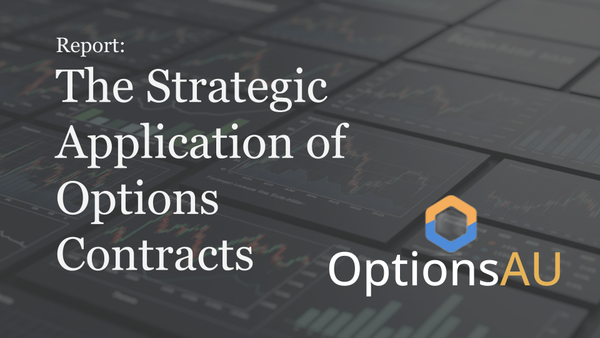Trading Direction vs Expected Move - Is there a conclusive answer?
Expected move vs directional bets are not competing concepts; they are two distinct, complementary data points. One informs your opinion on the trend, while the other quantifies the market's expectation of volatility.

We trade based on a view. Bullish, bearish or sideways. I'm sure that's a big reason why you're interested in options, the flexibility to choose how to profit from the market and any given point in time. That thesis, however, can be constructed from different fundamental questions. The most common question is one of direction: "Do I think this stock will go up or down?" A second, more nuanced question is one of magnitude: "By how much does the market expect this stock to move?"
Expected move vs directional bets are not competing concepts; they are two distinct, complementary data points. One informs your opinion on the trend, while the other quantifies the market's expectation of volatility.
Is one observation better than the other? Or should both be studied in unison to create optimal trades?
The Directional Thesis: Answering "Where?"
A directional thesis is a trader's active forecast on the future price movement of an underlying asset. What's most important is Delta, which indicates strength of direction. Stock is Delta 1, Other instruments, such as options will be a percentage of full delta exposure, and often is dynamic delta (as time, volatility or asset price moves, the delta is adjusted), measured by Gamma.
We can create strategies based on how much exposure you want (dollar delta), for how long (DTE) and adjust risk / reward ratios and profit levels (spreads ITM, ATM or OTM).
The Expected Move: Answering "By How Much?"
The Expected Move (EM) is a market-derived calculation. It is the options market's consensus on the potential magnitude of a price change by a given expiration date. It is a direct reflection of the underlying's Implied Volatility (IV). It often come close to the 1 Standard Deviation level statistically (68% chance for price to finish in the range).
- The EM can be used to assess whether option premiums are "expensive" or "cheap", creating the same concept as buy low Implied Volatility and sell high Volatility, but showcased as a price range rather than the IV Rank.
- If volatility is understated, buying strangles, straddles or Iron Condors are an option. Conversly, if the Expected move is wide due to elevated IV, selling those strategies might provide a better outcome. The Expected Move can also act as a reference to where to set your strike prices or break-even points.
Key Differences: A Side-by-Side Comparison
| Feature | Trading Direction | Trading Expected Move |
|---|---|---|
| Primary Question | "Where is the stock going?" | "How far could the stock move?" |
| Core Nature | Subjective (Trader's Opinion) | Objective (Market-Derived Data) |
| Source | Fundamental & Technical Analysis | At-the-Money Option Prices (Implied Volatility) |
| Key Greek | Delta | Vega / Implied Volatility / Theta |
| Output | A price forecast (e.g., "Up," "Down") | A price range (e.g., "±$1.36") |
| Use Case | Basis for directional bets | Basis for volatility bets & strike selection |
How These Concepts Inform Strategy Selection
A trader's directional thesis can be considered in the context of the market's Expected Move. For example:
A sold leg on a Bull Call Spread or a Bear Put Spread could be optimised by selling at or just outside the Expected Move. This can be seen as a 'sweet spot' between width of strikes (potential profit) and maximum risk (Net premium for trade entry). Same can be observed with trading Long Iron condors, which broken down is simple a bull call and a bear put spread together.
Otherwise, it's a trader choice. You can profit from either concept and both are valid ways to trade the derivatives market.
Trading direction has a bigger ability to profit more, considering the velocity of the move. Trading the expected move is a more statistical approach to capture the Implied Volatility inefficiencies.
However, I will say this. If you solely trade direction, consider the Expected move before playing your trade. It might help you optimise your strategy. If you trade solely Implied volatility, consider the direction of the market. Even is IV is completely overstated, that doesnt mean price wont move at all.




